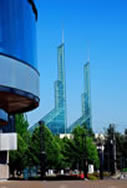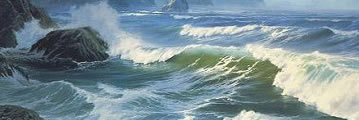
 Portland, as the site for the 2012 Ecological Society of America annual meeting, is an ideal match for this theme. At the broader scale, Oregon has a diversity of ecosystems (rocky coastal habitat, temperate rainforest, mid to high elevation conifer forest, and even desert in the southeastern portion of the state). Oregon is largely forested, and timber harvesting has traditionally been the major economic driver of the state. More recently, the economy has shifted towards high tech development forcing changes in land-use planning. As a city, Portland lies in the shadow of Mount Hood, one of the largest mountains in the United States, and lies at the confluence of two of the great rivers of the Pacific Northwest (Columbia and Willamette). The region has had a long and rich history of natural resource utilization�sometimes sustainably, sometimes not. Portland is now known as one of the most progressive and �greenest� cities in the United States and is widely recognized for their land-use planning. Against a backdrop of urban and cultural development they have in many ways become a model for utilization, sustainability, and preservation of the ecosystems in which they live.
Portland, as the site for the 2012 Ecological Society of America annual meeting, is an ideal match for this theme. At the broader scale, Oregon has a diversity of ecosystems (rocky coastal habitat, temperate rainforest, mid to high elevation conifer forest, and even desert in the southeastern portion of the state). Oregon is largely forested, and timber harvesting has traditionally been the major economic driver of the state. More recently, the economy has shifted towards high tech development forcing changes in land-use planning. As a city, Portland lies in the shadow of Mount Hood, one of the largest mountains in the United States, and lies at the confluence of two of the great rivers of the Pacific Northwest (Columbia and Willamette). The region has had a long and rich history of natural resource utilization�sometimes sustainably, sometimes not. Portland is now known as one of the most progressive and �greenest� cities in the United States and is widely recognized for their land-use planning. Against a backdrop of urban and cultural development they have in many ways become a model for utilization, sustainability, and preservation of the ecosystems in which they live.
Biodiversity, is generally thought of by most as the number and variety of organisms on earth. Few include the other two aspects of the more comprehensive definition which requires the inclusion and consideration of both genetics and ecosystems. All three aspects are essential for the broadest consideration of life on earth. Species population declines and mass extinctions have always been part of the natural process; however, observations made over the last few decades have made it clear that these dynamics are quite out of the ordinary. Moreover, it now appears that one species, Homo sapiens, is at the center of these changes and massive alteration to natural ecosystems is being felt around the world. Thus, at no other time in human history has it become more important than the present to better understand and sustain the ecosystems in which we live. To preserve biological diversity (ecosystems, species, and genes) we need to focus on informed, sustainable utilization at the landscape scale.
Copyright © ESA. All rights reserved
